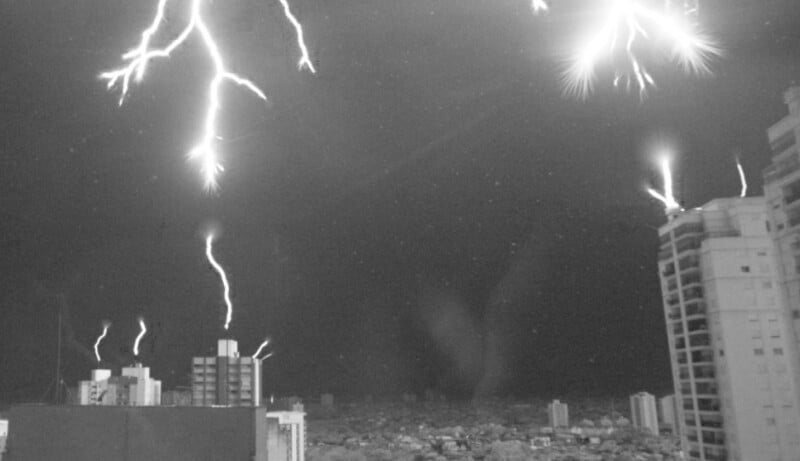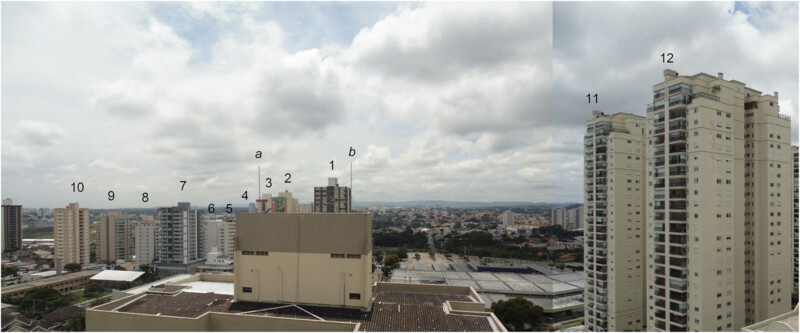Photo from High-Speed Camera Reveals How Lightning Rods Work

Scientists used a camera that records at 40,000 frames per second to capture a novel photo that reveals how lightning rods behave.
The amazing image shows the moment several lightning rods attempt to connect with the lightning that is thundering down from the sky above.
Marcelo Saba, a researcher at Brazil’s National Space Research Institute (INPE), and Ph.D. candidate Diego Rahomonn were fortunate to have set their camera up in exactly the right spot to capture the image for their research paper.
“The image was captured on a summer evening in São José dos Campos [Brazil] while a negatively charged lightning bolt was nearing the ground at 230 miles (370 kilometers) per second,” explains Saba in a press release.
“When it was a few dozen meters from ground level, lightning rods and tall objects on the tops of nearby buildings produced positive upward discharges, competing to connect to the downward strike.
“The final image prior to the connection was obtained 25 thousandths of a second before the lightning hit one of the buildings.”
![]()
The image is actually taken from a video, recorded at 40,00 frames per second, and when played back in slow motion (above) it shows the lightning strike actually connects with a smokestack on top of one of the buildings and not one of the 30 lightning rods that are in the vicinity.
“A flaw in the installation left the area unprotected. The impact of a 30,000-amp discharge did enormous damage,” adds Saba.

On average, 20% of all lightning strikes involve an exchange of electrical discharges between clouds and the ground with the other 80% occurring inside clouds.
Upward strikes also occur but are rare and start at the top of tall structures such as mountains, skyscrapers, towers, and antennas.
“Lightning strikes can be as long as 60 miles (100 kilometers) and transport currents as strong as 30,000 amps, equivalent to the current used simultaneously by 30,000 100-watt bulbs,” says Saba.
“In some cases, the current can reach 300,000 amps. The temperature of a typical lightning strike is 30,000 degrees Celcius, five times the Sun’s surface temperature.”
Image credits: Feature photo by Diego Rhamon/INPE.